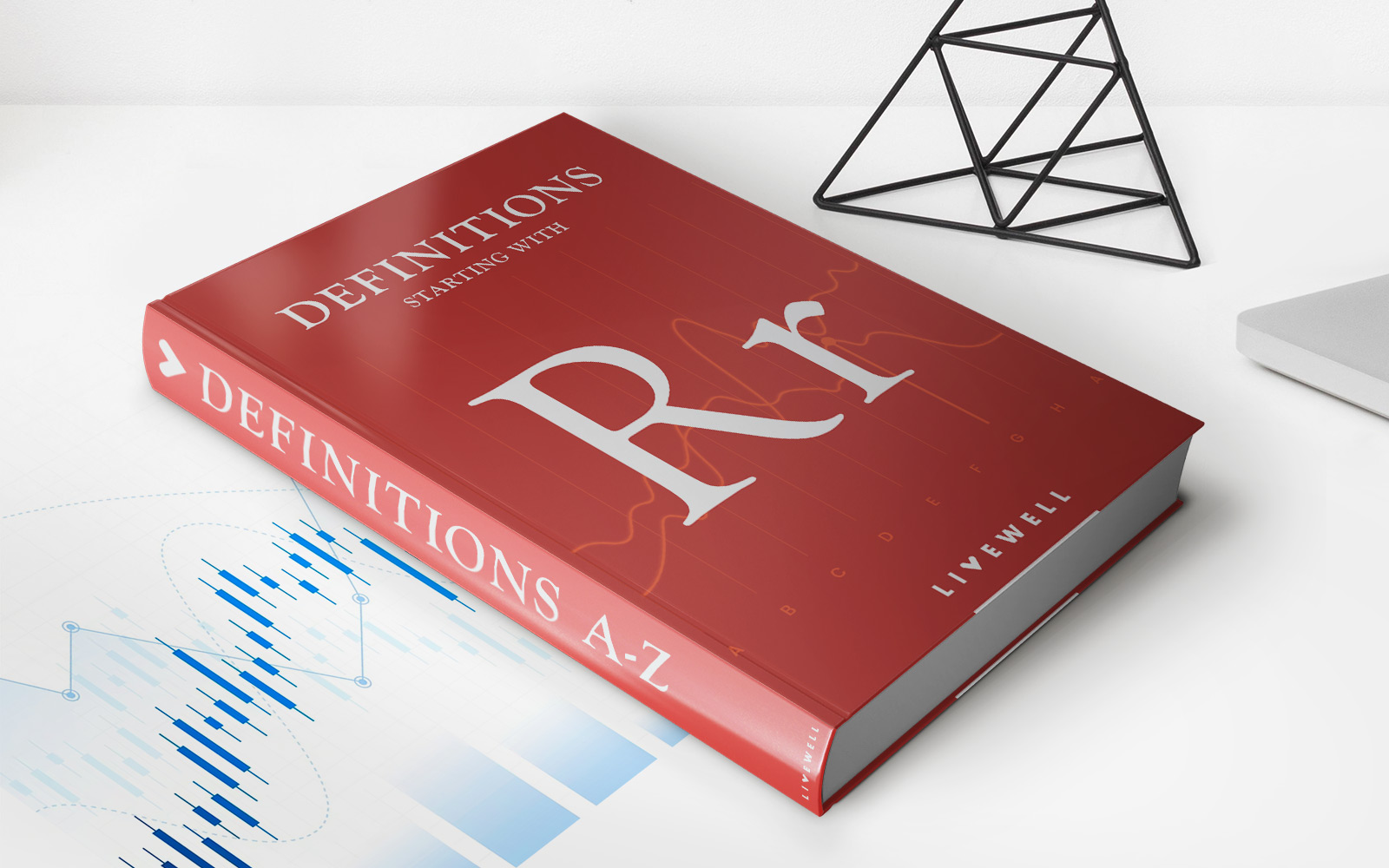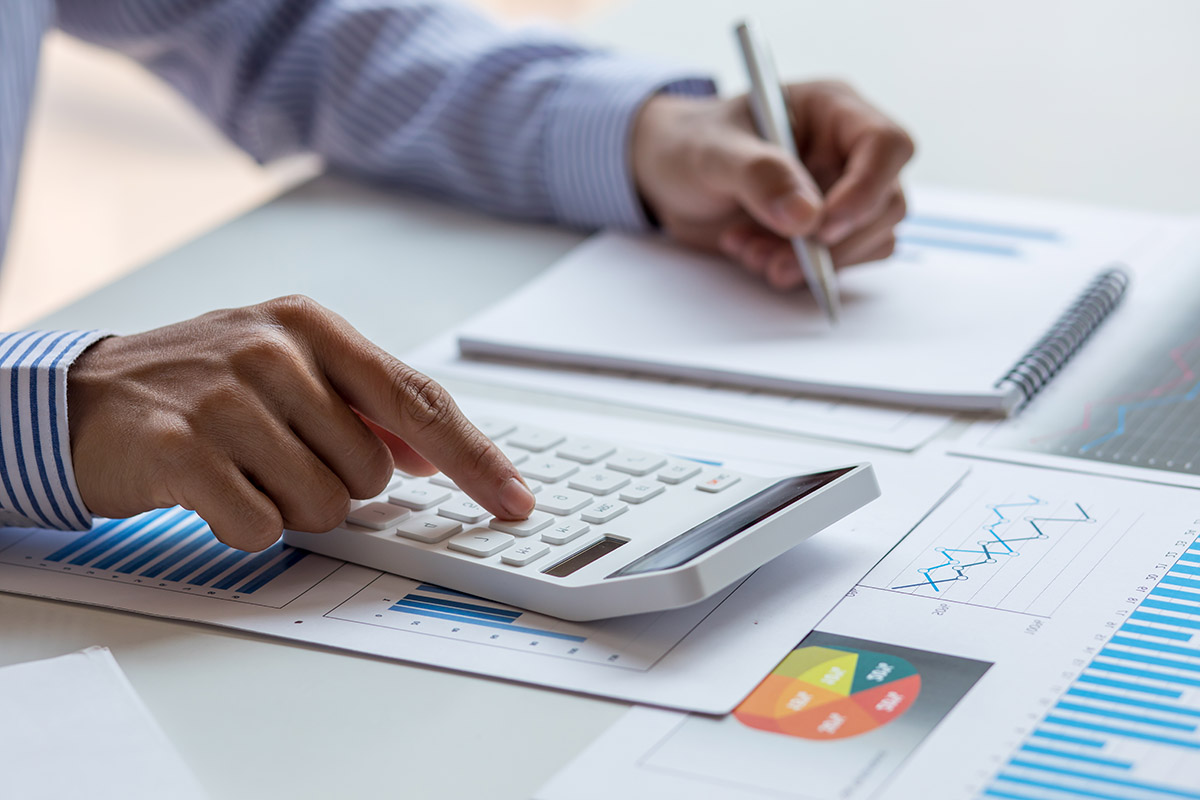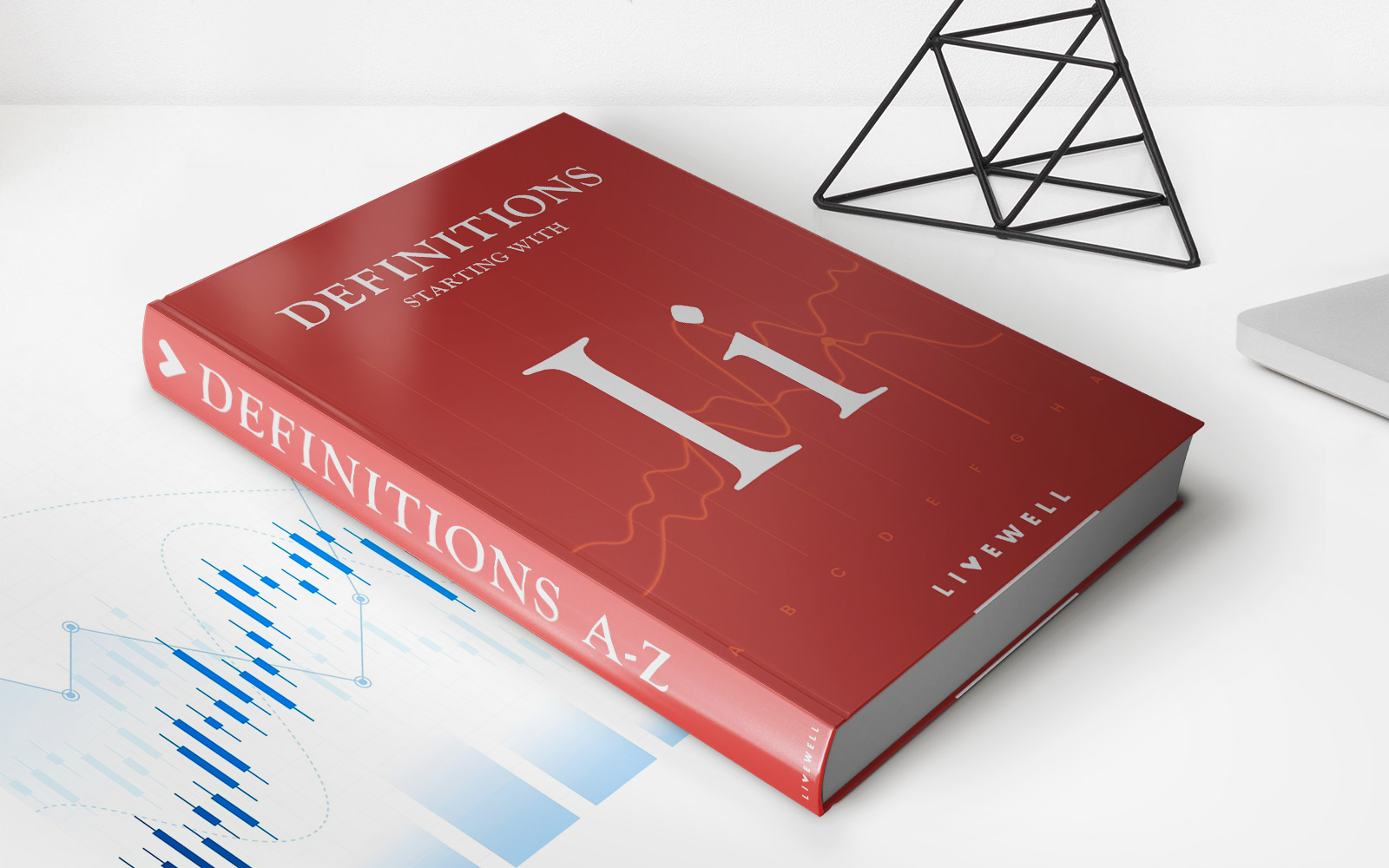Home>Finance>How To Calculate The Percent Change In Real GDP


Finance
How To Calculate The Percent Change In Real GDP
Published: October 28, 2023
Learn how to calculate the percent change in real GDP in the finance field. Gain insights into analyzing economic growth and making informed financial decisions.
(Many of the links in this article redirect to a specific reviewed product. Your purchase of these products through affiliate links helps to generate commission for LiveWell, at no extra cost. Learn more)
Table of Contents
Introduction
Welcome to our guide on how to calculate the percent change in real GDP. Understanding the concept of percent change is essential when analyzing economic data, especially when it comes to measuring the performance of a country’s economy. Real GDP, or Gross Domestic Product, is a key indicator used to assess the overall economic health and growth of a nation.
Real GDP is a measure of a country’s total economic output adjusted for inflation, which provides a more accurate representation of economic growth over time. Changes in real GDP can indicate whether an economy is expanding or contracting and can provide valuable insights for policymakers, businesses, and investors.
Calculating the percent change in real GDP allows us to quantify the rate at which an economy is growing or declining. This information is vital for making informed economic decisions, forecasting future trends, and comparing the performance of different economies or time periods.
In this guide, we will walk you through the steps to calculate the percent change in real GDP. We will also provide an example calculation to illustrate the process. Whether you are a student, an economist, or someone interested in understanding the basics of economic indicators, this guide will equip you with the necessary knowledge to analyze and interpret changes in real GDP.
So let’s dive in and explore the fascinating world of calculating the percent change in real GDP!
Understanding Real GDP
Before we delve into calculating the percent change in real GDP, it is crucial to understand what real GDP represents. GDP stands for Gross Domestic Product, which measures the total value of all goods and services produced within a country’s borders during a specific period. It serves as a key indicator of economic performance and growth.
Real GDP, unlike nominal GDP, takes inflation into account. Inflation is the general increase in prices over time, which can distort the true economic growth rate. By adjusting for inflation, real GDP provides a more accurate representation of the changes in the production of goods and services.
Real GDP is calculated by using a base year as a reference point and applying price indexes to adjust for changes in prices. The base year is chosen as a benchmark, and the quantities of goods and services produced in subsequent years are valued at prices from the base year.
Real GDP takes into account the changes in both quantity and price, which allows for a more meaningful comparison of economic output across different years. It helps economists and policymakers identify whether an economy is growing or contracting, as well as analyze the factors contributing to the growth rate or economic downturn.
Real GDP is often used to assess the standard of living, productivity, and economic well-being of a country. It can also be broken down into different sectors, such as agriculture, manufacturing, and services, to analyze the contributions of each sector to overall economic growth.
By understanding the concept of real GDP and its significance as a measure of economic activity, we can now proceed to calculate the percent change in real GDP. This calculation allows us to determine the growth or decline rate of an economy over a specific period, providing valuable insights for policymakers, businesses, and investors.
The Concept of Percent Change
Percent change is a fundamental concept used to measure the relative change in a value or quantity over a specific time period. It is expressed as a percentage and provides a standardized way to compare the magnitude of change between different values.
When it comes to economic indicators like real GDP, calculating the percent change allows us to quantify the growth or decline rate of an economy over time. It provides valuable insights into the health and performance of an economy and helps economists, policymakers, and analysts make informed decisions.
The formula to calculate the percent change is as follows:
Percent Change = ((New Value – Old Value) / Old Value) * 100
Let’s break down the components of this formula to gain a better understanding:
– New Value: The value or quantity at the end of the time period or the latest observation.
– Old Value: The value or quantity at the beginning of the time period or the previous observation.
The numerator in the formula represents the difference between the new value and the old value. This difference is then divided by the old value and multiplied by 100 to express the change as a percentage.
If the result of the calculation is a positive value, it indicates an increase or growth. Conversely, a negative value represents a decrease or decline. The magnitude of the percentage change reflects the proportion of the change relative to the old value.
Calculating the percent change in real GDP allows us to determine the growth rate or contraction rate of an economy, providing insights into its overall performance. This quantification helps in comparing different economies, analyzing trends, and making predictions for future economic conditions.
Now that we understand the concept of percent change, let’s move on to the steps involved in calculating the percent change in real GDP.
Steps to Calculate Percent Change in Real GDP
Calculating the percent change in real GDP involves a straightforward process that can be broken down into the following steps:
Step 1: Obtain the real GDP values for two time periods: To calculate the percent change, you need the real GDP values for two different time periods. These time periods can be consecutive quarters, years, or any other suitable time interval.
Step 2: Calculate the difference between the new and old real GDP values: Subtract the old real GDP value from the new real GDP value to find the difference. This difference represents the change in real GDP over the specified time period.
Step 3: Divide the difference by the old real GDP value: Divide the difference obtained in step 2 by the old real GDP value. This step normalizes the change by expressing it as a proportion of the initial baseline value.
Step 4: Multiply the result by 100: Multiply the value obtained in step 3 by 100 to convert it into a percentage. This step allows for a standardized representation of the change as a percentage.
The final result will be the percent change in real GDP between the two time periods. A positive value indicates growth or increase, while a negative value represents a decline or decrease.
It is important to note that real GDP should be used when calculating the percent change, as it adjusts for inflation and provides a more accurate measure of economic growth. Using nominal GDP, which does not consider inflation, may lead to misleading results and inaccuracies in assessing economic performance.
Now that we have outlined the steps involved in calculating the percent change in real GDP, let’s move on to an example to further illustrate the process.
Example Calculation
Let’s walk through an example to demonstrate how to calculate the percent change in real GDP.
Suppose we have real GDP data for two consecutive years: Year 1 and Year 2. In Year 1, the real GDP was $10 trillion, and in Year 2, it increased to $11 trillion. We want to calculate the percent change in real GDP between these two years.
Step 1: Obtain the real GDP values for Year 1 and Year 2:
– Year 1 Real GDP: $10 trillion
– Year 2 Real GDP: $11 trillion
Step 2: Calculate the difference between the new and old real GDP values:
– $11 trillion – $10 trillion = $1 trillion
Step 3: Divide the difference by the old real GDP value:
– $1 trillion / $10 trillion = 0.1
Step 4: Multiply the result by 100:
– 0.1 * 100 = 10
The percent change in real GDP between Year 1 and Year 2 is 10%. This implies that the economy experienced a 10% growth in real GDP during this time period.
It’s important to note that the percent change can also be negative if the real GDP decreases. For example, if the real GDP in Year 2 was $9 trillion instead of $11 trillion, the percent change would be calculated as follows:
Step 1: Obtain the real GDP values for Year 1 and Year 2:
– Year 1 Real GDP: $10 trillion
– Year 2 Real GDP: $9 trillion
Step 2: Calculate the difference between the new and old real GDP values:
– $9 trillion – $10 trillion = -$1 trillion
Step 3: Divide the difference by the old real GDP value:
– -$1 trillion / $10 trillion = -0.1
Step 4: Multiply the result by 100:
– -0.1 * 100 = -10
In this case, the percent change in real GDP is -10%, indicating a 10% decrease in real GDP between Year 1 and Year 2.
By following these steps, you can easily calculate the percent change in real GDP and gain insights into the growth or decline rate of an economy over a specific time period.
Takeaways
Understanding how to calculate the percent change in real GDP is essential for analyzing and interpreting economic trends. Here are the key takeaways from this guide:
– Real GDP is a measure of a country’s total economic output adjusted for inflation, providing a more accurate representation of economic growth over time.
– Percent change is a concept used to measure the relative change in a value over a specific time period and is expressed as a percentage.
– The formula to calculate percent change is ((New Value – Old Value) / Old Value) * 100.
– Calculating the percent change in real GDP allows us to quantify the growth or decline rate of an economy, providing valuable insights for policymakers, businesses, and investors.
– The process of calculating the percent change in real GDP involves obtaining the real GDP values for two time periods, calculating the difference between them, dividing the difference by the old value, and multiplying the result by 100.
– A positive percent change indicates growth or increase in real GDP, while a negative percent change represents a decline or decrease.
– Real GDP should be used when calculating the percent change as it adjusts for inflation.
By mastering these concepts and calculations, you can better understand and interpret changes in real GDP, enabling you to make more informed economic decisions, forecast future trends, and compare the health and performance of different economies.
Now that you have a solid understanding of how to calculate the percent change in real GDP, you are equipped with a valuable tool to analyze and evaluate economic growth. Remember to consider other economic indicators and factors when assessing the overall health and performance of an economy, as real GDP is just one measure of economic activity.
Conclusion
Calculating the percent change in real GDP is an essential skill for anyone interested in understanding and analyzing economic trends. Real GDP provides valuable insights into the overall health and growth of an economy, and calculating its percent change allows us to quantify the rate of expansion or contraction over a specific time period.
In this guide, we have explored the concept of real GDP and its significance as a measure of economic output. We have also discussed the concept of percent change and its formula for calculating the relative change in a value. By following the steps outlined in this guide, you can easily calculate the percent change in real GDP.
Understanding the percent change in real GDP is crucial for policymakers, economists, businesses, and investors. It helps in making informed decisions, forecasting future economic conditions, and comparing the performance of different economies. Changes in real GDP can indicate whether an economy is experiencing robust growth, a slowdown, or even a recession.
Remember to use real GDP values when calculating the percent change, as it accounts for inflation and provides a more accurate representation of economic performance. Using nominal GDP, which does not adjust for inflation, may lead to misleading results.
By mastering the concept of percent change in real GDP and analyzing economic data, you can gain valuable insights into economic trends, make informed decisions, and contribute to discussions on economic policy and development.
We hope this guide has provided you with a clear understanding of how to calculate the percent change in real GDP and its importance in economic analysis. As you delve deeper into the world of economics, continue exploring the various indicators and factors that shape the economic landscape, allowing you to navigate and interpret the complexities of the global economy.














